―
Plastic Snow Falling in Antarctica?!
―
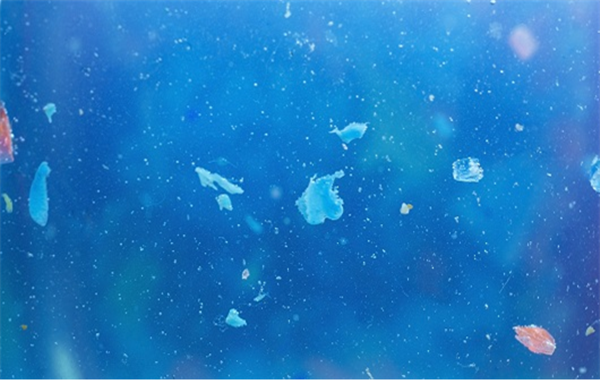
Just this June 8th, shocking news came from Antarctica: Microplastics have been found in the snow falling on Antarctica. Microplastics were detected in all snow samples taken by researchers at the University of Canterbury in New Zealand from 19 different sites on the Ross ice shelf in Antarctica.
Snow samples taken turned up an average of 29 pieces of microplastic per 1 liter of melted water. The shocking revelation is that Antarctica, known as the cleanest and unblemished region on Earth, can no longer be free from environmental damage.
It is surmised that the microplastics found in the snow fall along with the snow, blending with fine droplets as the microparticles drift through the atmosphere. Researchers at the University of Canterbury said, "Through modeling studies, we have found that the microplastics discovered this time may have reached Antarctica from 6,000 kilometers away."
―
The Top Five Ocean Plastic Islands
―
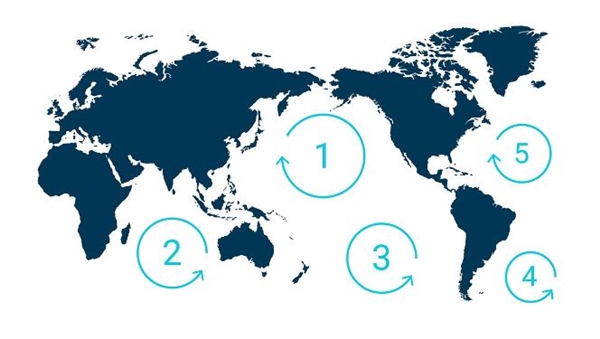
(Image Source: The Ocean Cleanup)
It’s not only the skies. Plastics have already invaded the oceans too.
The five areas on the map above represent the world's five largest marine plastic accumulation areas. Area 1, the largest plastic island, is called the Great Pacific Garbage Patch (GPGP). According to The Ocean Cleanup, a Dutch non-profit organization engaged in ocean plastic removal activities, the GPGP covers an area of 1.6 million square kilometers (616,764 square miles).
1.6 million square kilometers: can you get any idea how vast that is? It amounts to three times the size of France. The weight itself is stupendous. It's estimated that about 80,000 tons of plastic are floating in the GPGP—the equivalent of 500 fully loaded jet cargo planes.
In quantity, that's about 1.8 trillion pieces of plastic. Dividing this number by the world's population of 7 billion, we get 250. That means each of us dumped on average 250 pieces of plastic into the local waters, which all ended up there.
https://theoceancleanup.com/great-pacific-garbage-patch/
(Go to The Ocean Cleanup for more data)
How did plastic come to form islands?
Let's say you inadvertently drop a plastic bottle on a California beach. The plastic flotsam travels south of Mexico with the current, then across the Pacific Ocean in the North Equatorial Current, all the way to Japan. The bottle again travels north along the Kuroshiro Current and then east along the North Pacific Ocean.
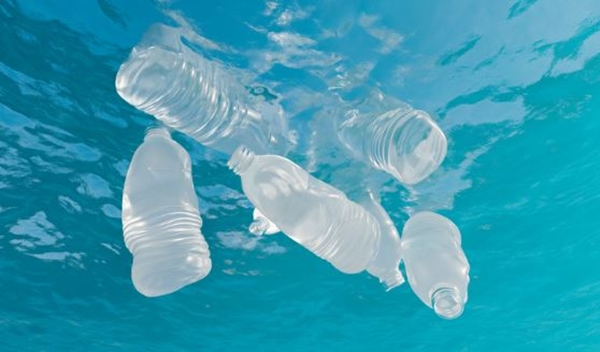
As the plastic bottle floats in the sea, it gradually breaks up into tiny pieces of plastic that float around the sea forever. Another thing that can happen is the plastic bottle meets another plastic and they hang around together. And this process indefinitely repeats over a long period of time.
As a result, five gigantic plastic islands have formed in the open sea. These islands are a disaster of our own making, not someone else's.
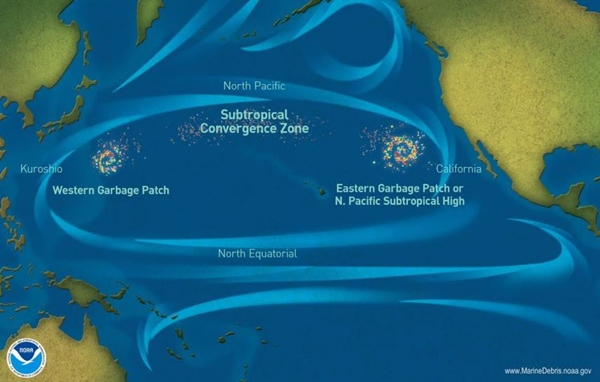
(Image source: National Geographic)
―
“The whole world confronts a maritime emergency”
United Nations Maritime Conference
―
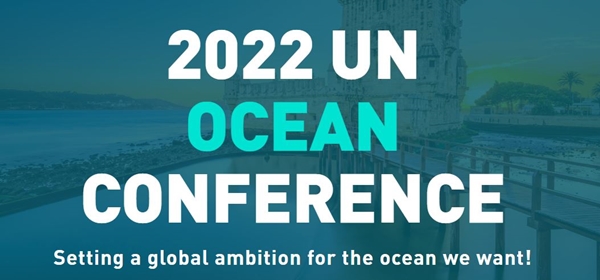
The 2nd UN Ocean Conference was held in Lisbon, Portugal from June 27 to July 1.
At the conference, UN Secretary-General Antonio Gutierrez declared that the world is facing a “maritime emergency” and warned that “Eight million tons of plastic will continue entering the sea every year.” Without drastic action, by 2050 the burden of plastic will weigh heavily on all marine life, especially fish.
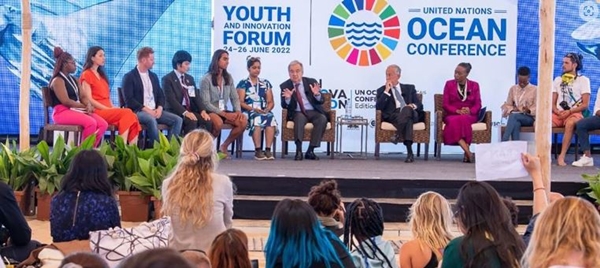
UN Secretary-General speaking at the Youth and Innovation Forum at the United Nations Maritime Conference (Source: UN)
―
A report on marine ecosystems destroyed by plastics
―
It is now widely known that marine ecosystems are being harmed by the huge amount of plastic that is pouring into the sea. Ongoing precise research on marine pollution continues, but the published results of the study are very bleak.
In February, the World Wildlife Fund (WWF) published the report, “Impact of Plastic Pollution in the Ocean on Marine Species, Biodiversity and Ecosystems,” analyzing 2,592 studies on plastic production, dispersal, impact, and biodegradation.
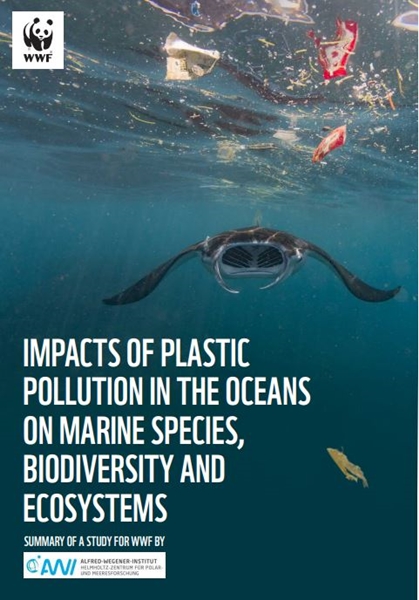
https://wwfint.awsassets.panda.org/downloads/wwf_impacts_of_plastic_pollution_on_biodiversity.pdf
○ 50-fold increase in microplastics by the end of the 21st century. First, the report warns that by the end of the 21st century, the amount of microplastics could increase by 50 times in ocean surface amounting to over 2.5 times the size of Greenland.
○ More than 1.21×105 of microplastics per 1m3 of the sea. The report also assessed that there are already over 1.21×105 particles of microplastics per cubic meter, bordering on the ecological risk threshold in many regions of the world.
In particular, certain "hotspots" where pollution is concentrated, such as the Mediterranean Sea, East China Sea, Yellow Sea and Arctic sea ice, have already significantly exceeded the ecologically irreversible threshold. If microplastics exceed their limits, they can even lead to the extinction of marine species in the worst case.
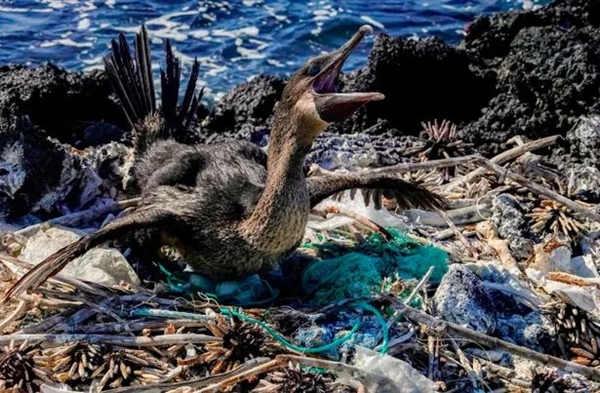
(Galapagos cormorant with plastic litter in nest. Source: Guardian)
○ Seabirds and turtles ingesting plastic
It is also estimated that up to 90% of all seabirds and up to 52% of all sea turtles eat plastics, with 88% of marine species being negatively affected by plastics.
Plastics cause injury or death to marine animals, can inhibit the movement and growth of organisms, and reduce food intake, immune response, or the organism's fertility.
In addition, plastics pose a serious threat to almost all marine species, including endangered species such as mangroves and coral reefs, which are essential for maintaining marine biodiversity, monk seals in the Mediterranean, and sperm whales.
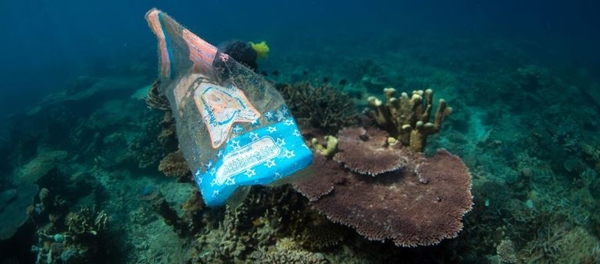
(Photo source: UN)
○ Mangroves as carbon outlets, seaweed crisis
The ocean serves as the planet's largest carbon sink. Special thanks to carbon-storing mangroves, seaweeds, salt marshes and coral reefs. Yet plastic pollution puts these biomes at risk of failing to combat climate change.
“Once plastic waste enters the sea, it is almost impossible to recover,” said Heike Vesper, director of the WWF German maritime program.
―
Resolution of International Convention on Marine Plastic Pollution
―
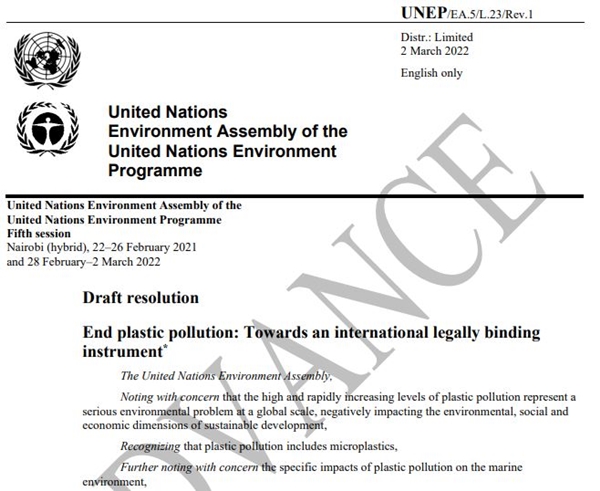
Not long ago, a historic agreement was reached to curb plastic pollution.
At the 5th United Nations Environment Assembly (UNEA-5) held in Nairobi, Kenya, from February 28 to March 2, it was agreed to establish a legally binding international agreement to end plastic pollution by 2024.
Meanwhile, the UN Environment Assembly has drawn up several resolutions to solve the marine plastic problem. However, this agreement will not limit the plastic pollution problem to the ocean, but will include management measures for the full lifecycle including production, use and disposal of plastics.
https://www.gibsondunn.com/update-on-un-roadmap-for-a-new-global-plastics-treaty/
(Go to the details of the agreement)
―
Private Efforts to Solve Marine Plastics
―
The private sector is also making great efforts to reduce marine plastics.
○ Let us get rid of marine plastics! The Ocean Cleanup
The Netherlands Ocean Cleanup is a group of scientists and engineers who have developed and are actually applying technology to remove plastic from the sea.
There are two main approaches: How to stop the flow of plastic from rivers to the ocean and how to remove plastic already accumulated in the sea.
▪ Interceptor solutions: Blocking inflow from rivers
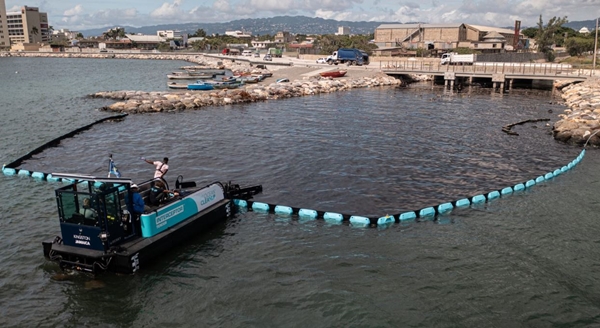

It is estimated that 80% of plastic flows into the ocean through 1000 rivers. Ocean Cleanup is reducing the influx of plastic into the sea by installing net barriers, etc. at key locations in Indonesia, Malaysia, Vietnam, Dominican Republic, Jamaica, and Guatemala.
▪ An artificial coastline that collects plastic from the sea
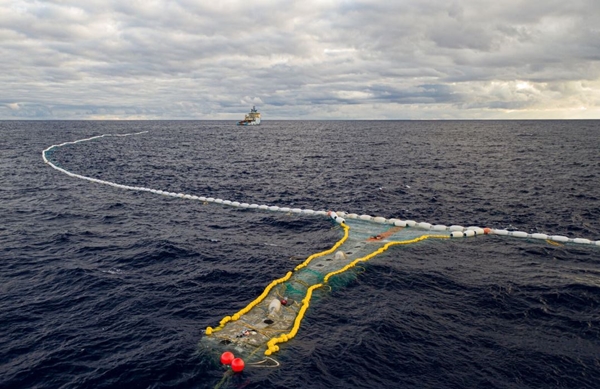
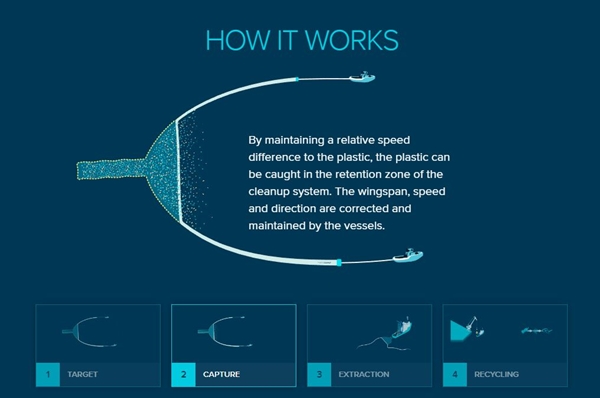
This a method of actively collecting plastic floating in the sea by creating an artificial coastline with two boats like a double fishing boat. Ocean Cleanup plans to remove 90% of plastic from the Pacific Garbage Island (GPGP) by 2040.
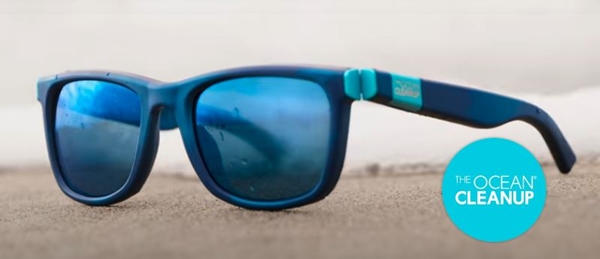
(Sunglasses made from recycled marine plastic in partnership with Swiss and Italian companies)
○ PHA bioplastic that biodegrades in water
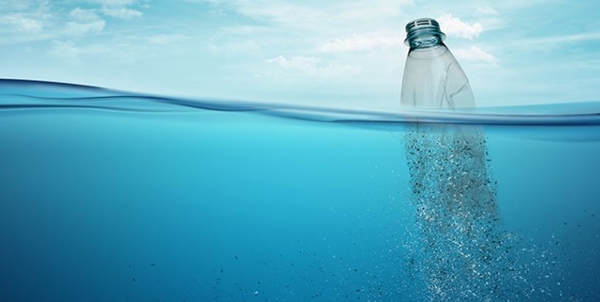
(Image source: Hanwha Total Energy)
PHA bioplastics are plastics that are biodegradable in nature. Since they are made through microbial fermentation, the problem of carbon generation in the plastic production stage is also solved.
Since production cost and technical barriers are still high, there are differing ideas about how to introduce PHA to marine-related products such as fishing gear and buoys, where biodegradable technology is urgently needed.
http://www.sunhakpeaceprize.org/kr/news/issue.php?bgu=view&idx=610
(Go to the previous issue of the Sunhak Peace Prize related to bioplastics)
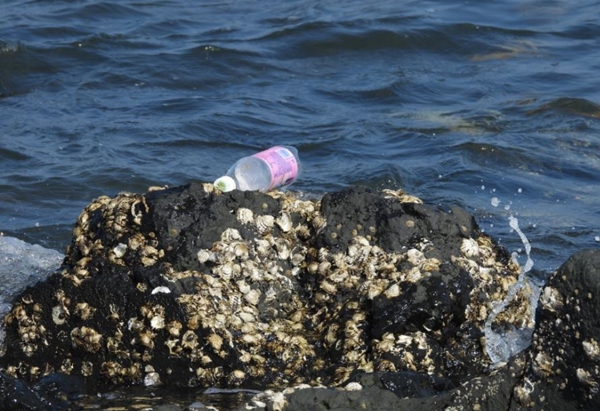
(Chinese plastic water bottle found on Baengnyeong Island in South Korea. Source: JoongAng Ilbo)
Since 80% of marine debris comes from land, the first and easiest action we can take to help clean up the plastic-struck ocean is to find ways to stop the plastics from flowing into rivers and oceans.
Written by Sharon Choi
Director of Planning
Sunhak Peace Prize Secretariat

